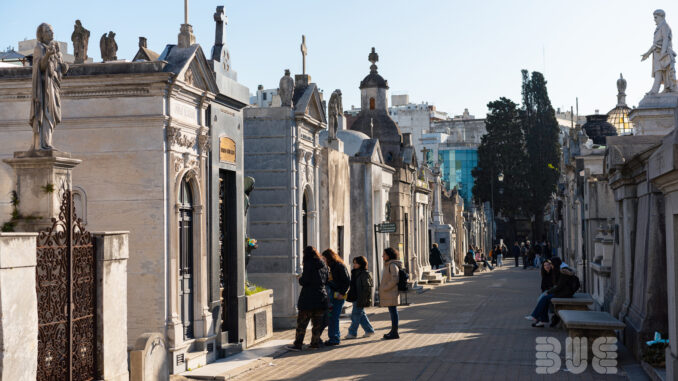
By Gerry Barker
Think about Buenos Aires and Argentina, and you conjure images of great food, Malbec wine and sultry dancers doing the tango late into the night. And that’s just a sampling of what this South American city has to offer.


dockside area of Buenos Aires
At the recently concluded Seatrade Cruise Global in Miami Beach, Fl., Fernando Amer, director for tourism promotion and communication at the Buenos Aires Tourism Board, and Karina Perticone, executive director of Visit Buenos Aires, talked to me about both the city and the growing role it plays in the cruise industry.
“This season (which runs from April to October) we will have 127 cruise ship visits,” said Amer, which translates to 450,000 passengers coming to Buenos Aires yearly. Amer added that Buenos Aires is also a waystation for guests on their way to Antarctica, an increasingly popular destination.
What can people who visit expect when they go to Buenos Aires?



“Buenos Aires is a mix of European heritage and Latin culture,” said Amer, reflected in the buildings and architecture, such as the historic Teatro Colón opera house, rated as one of the world’s best. “It’s a good entrance to South America because you don’t experience much culture shock.”
Amer also noted Buenos Aires, which is home to almost 14 million people, “is a very safe city — one of the safest in Latin America.”
For foodies, Buenos Aires is full of gastronomical delights, and their restaurant scene “draws people from all over the world,” Amer said. That’s not surprising, since the city hosts 52 restaurants that carry a coveted Michelin star.
“We have eight of the 50 best restaurants in Latin America, one of the 50 best in the world, and three bars that rate in the world’s top 100 best bars.”


Ms. Perticone said visitors will find the city boasts a vibrant nightlife, “with a lot of shows and speakeasy bars,” as well as what Argentina is famous for: Tango.
Tango can trace its origins to the 1880s in the area around the Rio de la Plata, the river that fronts Buenos Aires and serves as the border between Argentina and Uruguay. From there, its popularity spread worldwide, evolving into many variations and styles.
“There are amazing tango shows,” they said, staged in milongas (dance halls) and tango clubs around the city, which “offer a more authentic experience.” For those who want to learn how to tango, Amer said there are tango academies as well. At one time, my wife and I enrolled in a tango class — and let’s just say I am going to need more instruction (some natural dance ability wouldn’t hurt, either).
Amer said visitors to Buenos Aires don’t need a visa or any special paperwork, and because it’s only a one-hour difference from the eastern time zone, “jet lag isn’t a problem.” To get there from Miami, flight time is 9-10 hours.

If it’s your first time in Buenos Aires, they recommend a 3 or 4-night minimum stay, which could include sightseeing around the city and visiting the wine country. Argentina is the fifth-largest wine producer in the world, and Malbec accounts for almost 50 percent of its wine exports.

If you have more time, consider taking a 90-minute flight to Iguazu Falls, at the borders of Brazil, Argentina and Paraguay. Its 275 waterfalls comprise the largest waterfall system in the world, and include Devil’s Throat, the largest and most dramatic of the falls, nearly 500 feet wide and 270 feet tall.
With good public transportation, getting around is easy they said, and Uber is available as well. And even if you don’t speak the language, “people are very friendly and will try and help.”
The best time to go? “Our weather is moderate most of the year,” Amer said. “We don’t have a strong winter.”
Besides enjoying great food and wine, and immersing yourself in its culture, it’s also a chance to impress your friends with the tango.
Photos Courtesy of Visit Buenos Aires and Visit Argentina

Be the first to comment